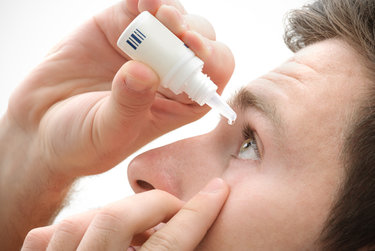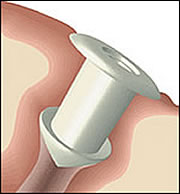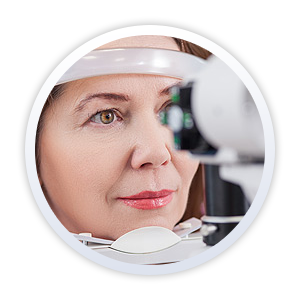What is dry eye?
Dry eye is a reduction in your eye’s ability to produce sufficient natural tears. Insufficient tear production can lead to irritation and pain, and even scarring of the cornea (the transparent part of the eye that covers the pupil and iris). Often dry eyes are due to environmental factors such as indoor heating or air conditioning. It can also be caused by occupational factors such as prolonged computer use, reading or other near work. Many people will experience dry eye symptoms at some point in their lives and it is one of the most common problems treated by eye physicians.
What are the symptoms of Dry Eye?
Dry eye is a disorder of the tear film due to tear deficiency or excessive tear evaporation which causes damage to the exposed eye surface and is associated with symptoms of ocular discomfort. These symptoms include: eye fatigue, discomfort, redness, itching, burning, dryness, irritation, crusting of lids, scratchiness, excessive tearing (watering), discharge, blurry vision that improves with blinking, pain, light sensitivity, blinking abnormalities, and foreign body sensation (sandy or gritty eyes).
How is Dry Eye diagnosed?
Most clinicians diagnose and treat dry eye based on the symptoms alone. Assessment of symptoms has been determined to be the single most important test for dry eye syndrome diagnosis. Certain tests can be performed to help determine if you have dry eye, however, it is not uncommon for a patient to have normal test results, but still have dry eye syndrome.
 What are the treatments for Dry Eye?
What are the treatments for Dry Eye?
Treatment of dry eyes can vary depending on the individual and their needs. Treatments include using artificial tears, medicated eye drops, oral medications, and the insertion of punctal plugs. There are even some recommended lifestyle changes that can help improve dry eyes, including drinking 8-10 glasses of water a day to keep the body hydrated, making conscious efforts to blink frequently when reading or working on the computer, and avoiding rubbing of the eyes which can often worsen the irritation.
Artificial tears supplement the inability of your eye to produce sufficient natural tears. Dozens of different types of artificial tears are available. Most all bottled eye drops have a preservative to prevent contamination of the bottle. For some patients, these preservatives can further irritate the eye, especially if used more than six times per day. Non-preserved tears (preservative-free) are the best if you need frequent eye drops or are sensitive to the preservative. These come in individual vials and must be discarded at the end of the day. Artificial tears also come in various viscosities (some similar to water ranging to very thick ointments). More severe dry eyes often require more viscous drops or ointment. The more viscous the tear, the more it tends to blur the vision.
 Restasis is an eye drop requiring a doctor’s prescription and is specifically indicated for the treatment of dry eye. It acts to reduce surface inflammation which can contribute to dry eyes and to improve the quality of the tear film. In addition, this is currently the only product that helps patients produce more of their own natural tears. It usually takes several weeks to help relieve dry eye symptoms and you should not reduce your use of artificial tears during this period unless told to do so by your physician.
Restasis is an eye drop requiring a doctor’s prescription and is specifically indicated for the treatment of dry eye. It acts to reduce surface inflammation which can contribute to dry eyes and to improve the quality of the tear film. In addition, this is currently the only product that helps patients produce more of their own natural tears. It usually takes several weeks to help relieve dry eye symptoms and you should not reduce your use of artificial tears during this period unless told to do so by your physician.
Oral medications such as Salagen and Evocac are two different prescription medications that are only used for patients with very severe dry eye and a systemic condition called Sjogren’s syndrome.
 The use of punctal plugs can be an effective step in treating moderate to severe dry eye that is unresponsive to artificial tear drops and ointments. The tears normally drain into the nose via the tear ducts in the corner of the eyes. By inserting punctal plugs into these tear ducts, this outflow is blocked which keeps the tears in the eye for a longer time. This is a simple procedure that is painless and is done in the office in just a few minutes. The plugs may spontaneously fall out after about one year and may need to be replaced.
The use of punctal plugs can be an effective step in treating moderate to severe dry eye that is unresponsive to artificial tear drops and ointments. The tears normally drain into the nose via the tear ducts in the corner of the eyes. By inserting punctal plugs into these tear ducts, this outflow is blocked which keeps the tears in the eye for a longer time. This is a simple procedure that is painless and is done in the office in just a few minutes. The plugs may spontaneously fall out after about one year and may need to be replaced.





